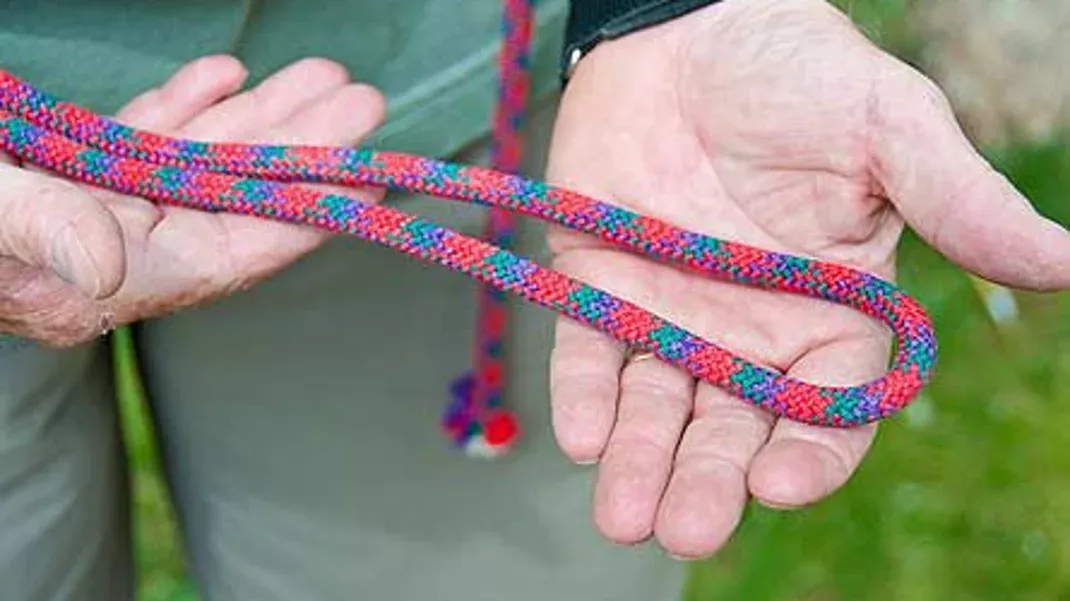How to Tie a Prusik Knot
The Prusik knot is a friction hitch that is commonly used in climbing and mountaineering to attach a loop of cord to a larger rope. To tie a Prusik knot, first create a loop with the smaller cord and pass it around the larger rope. Then, wrap the free end of the loop around the larger rope three times, ensuring that the wraps are parallel and snug. Finally, thread the free end of the loop back through itself, creating a girth hitch, and tighten the knot by pulling on both ends of the cord. The Prusik knot provides a secure and adjustable attachment point for ascending or descending a rope.

The Prusik knot is a versatile and useful knot used in climbing, mountaineering, and other outdoor activities. It is commonly used for ascending and descending ropes, as a safety backup, or for creating friction hitches. The Prusik knot is a friction hitch, which means it works by creating friction between the rope and the knot itself, allowing it to grip the rope securely.
To tie a Prusik knot, you will need a length of rope and a smaller diameter cord or rope to use as the Prusik loop. The Prusik loop is typically made from a cord or rope that is about half the diameter of the main rope you are using. This smaller diameter cord will create more friction around the main rope, making the Prusik knot more secure.
To begin, take the smaller diameter cord and form a loop by crossing the two ends over each other. The loop should be just large enough to fit around the main rope. Next, wrap the cord around the main rope, passing one end of the cord through the loop you created. Then, continue wrapping the cord around the main rope, making at least three complete wraps. The number of wraps you make will depend on the diameter and type of rope you are using, but three to five wraps is generally sufficient.
After making the wraps, pass the end of the cord back through the loop in the opposite direction, so that the end comes out on the same side it entered. Pull the ends of the cord to tighten the wraps around the main rope, making sure the knot is snug and secure. The Prusik knot should now be gripping the main rope firmly, creating friction that will hold it in place.
When tying a Prusik knot, it is important to ensure that the wraps are tight and even, with no gaps or loose spots. This will ensure that the knot grips the rope securely and will not slip under load. It is also important to use a cord or rope that is strong and durable, as the Prusik knot will be supporting weight and must be able to withstand the forces placed on it.
The Prusik knot can be tied using a variety of different techniques, depending on the specific application and the type of rope being used. One common method is to tie the Prusik knot using a double fisherman's knot to create the loop, and then wrapping the cord around the main rope as described above. Another method is to tie the loop using a figure-eight knot, which can also be used to create a secure and reliable Prusik loop.
In addition to tying the Prusik knot, it is important to understand how to use it effectively in different situations. When using the Prusik knot for ascending or descending ropes, it is important to ensure that the knot is properly dressed and that the wraps are tight and secure. It is also important to maintain tension on the rope when using the Prusik knot, as this will ensure that the knot grips the rope effectively and will not slip.
When using the Prusik knot as a safety backup, it is important to tie the knot properly and to regularly check it for signs of wear or damage. It is also important to ensure that the Prusik loop is properly sized and positioned on the main rope, so that it will engage and grip the rope in the event of a fall or other emergency situation.
Overall, the Prusik knot is a valuable tool for climbers, mountaineers, and other outdoor enthusiasts. It is a versatile and reliable knot that can be used for a variety of purposes, from ascending and descending ropes to creating friction hitches and safety backups. By understanding how to tie and use the Prusik knot effectively, you can enhance your safety and security when engaging in outdoor activities.






